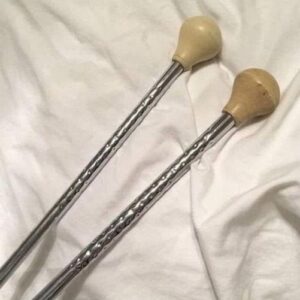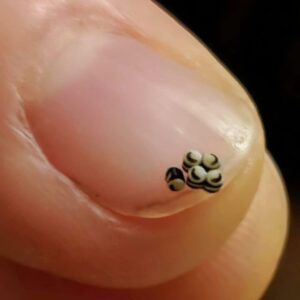Before glue sticks, double-sided tape, and high-tech adhesives took over our desks and classrooms, there was a humble little bottle that ruled them all: the vintage LePage’s mucilage bottle. If you ever squeezed one of those red rubber-tipped containers, you probably ended up with sticky fingers—and a whole lot of memories.
Let’s rewind the clock and revisit the tiny bottle that made a surprisingly big impact on art projects, office work, and generations of crafty hands.
The Birth of a Gluing Icon
Back in the late 1800s, long before the age of plastic packaging and digital everything, LePage’s Glue emerged from Canada and quickly spread across North America. What made it stand out wasn’t just the glue—it was the bottle.
LePage’s mucilage wasn’t your typical adhesive. It was made from natural plant materials like gum arabic, which gave it a safe, non-toxic profile—ideal for kids and classrooms. But the real genius was in the packaging. The clear glass (and later, plastic) bottle had an instantly recognizable curvy shape and a bright red rubber tip that doubled as an applicator. No separate brush. No caps to lose. Just squeeze and stick.
Video: Check out the video to see what happens when you pour super glue onto baking soda—prepare to be amazed!
The Design That Made It Unforgettable
Ask anyone who used one, and they’ll tell you—the LePage’s bottle was a sensory experience. The rubber tip was firm but flexible. It dispensed glue evenly without the goopy mess. You could control the flow with a gentle squeeze, and when you were done, the tip self-sealed just enough to prevent it from drying out too quickly.
It was ergonomic before “ergonomics” was even a thing. The bottle fit easily in small hands, making it a staple in elementary schools and family homes. It was functional, durable, and—dare we say—kind of fun to use.
A Staple in Classrooms, Offices, and Junk Drawers
During the mid-20th century, you couldn’t swing open a classroom supply cabinet without spotting at least a couple LePage’s bottles. Teachers used them for everything—crafts, poster boards, and last-minute repairs. Students smeared them on construction paper masterpieces, diorama walls, and book report covers.
In offices, they sealed envelopes, fixed torn papers, and patched up filing folders. At home, they lived in junk drawers, ready to rescue a broken corner of a family photo or reattach a label to a recipe card.
It wasn’t just a tool—it was a quiet workhorse of daily life.
Mucilage Mayhem: The Memories That Stuck
If you grew up with LePage’s, you probably remember the clogs. When the glue dried in the tip, it meant one thing: time to find a toothpick or a paperclip and dig it out. Or maybe you remember the smell—slightly sweet, faintly medicinal—a scent that whispered, “It’s project day.”
There’s also the unmistakable sound of that rubber tip sliding across thick paper, and the horror of squeezing too hard and watching glue blob out like toothpaste. But no matter the mishaps, these memories are sticky in the best way.
The Brand With Personality
LePage’s wasn’t just a name—it was a personality. Their vintage ads were filled with cheerful cartoon mascots, catchy slogans, and messages aimed at parents and teachers. “No mess! No waste!” was a common phrase in their print campaigns.
And because of that distinct design, the bottle itself became iconic. It wasn’t just sold—it was remembered. Even today, nostalgic collectors and lovers of vintage design seek them out on auction sites and antique store shelves.
From Craft Room Hero to Retro Relic
Eventually, as the market shifted and new adhesive options took over—like white glue bottles, glue sticks, and modern tape runners—the LePage’s bottle slowly disappeared from store shelves. By the 1990s, it was mostly gone from the mainstream.
But it didn’t vanish entirely.
Today, vintage LePage’s bottles are collector’s gold. Some are repurposed as retro decor—mini vases, quirky desk accessories, or part of curated craft room displays. Others are proudly displayed by those who just can’t let go of their glue-stained childhood.
Why It Still Holds a Place in Our Hearts
So why do people still talk about this little bottle?
Because it was more than just glue. It was a moment in time. It reminded us of being hands-on, of creating something real and tangible with simple tools. There was something deeply satisfying about squeezing out just the right amount, watching the paper curl as it dried, and feeling like you made something.
That little bottle reminds us of a time when creativity wasn’t digital—it was messy, sticky, and real.
A Symbol of Simpler Times
Video: Watch the video as I test different glues with my computerized tester to find out which one is the strongest!
In a world where even crafting has gone high-tech, the LePage’s mucilage bottle stands as a tiny monument to the analog age. No batteries. No USB ports. Just plant-based glue, a rubber tip, and a whole lot of potential.
It’s proof that even small things—things we toss in drawers and forget about—can leave a massive mark on how we remember the past.
Conclusion: A Sticky Legacy That Still Holds Strong
The vintage LePage’s mucilage bottle may be small, but it packed a powerful punch in classrooms, offices, and homes across generations. It brought people together through glue-streaked crafts and repaired keepsakes. And it reminded us all that creativity doesn’t need to be flashy—it just needs a squeeze and a little imagination.
So, the next time you spot one of those red-tipped bottles sitting on a dusty thrift store shelf, smile. Because if you know what it is, chances are, you’ve had ink-stained fingers too.





